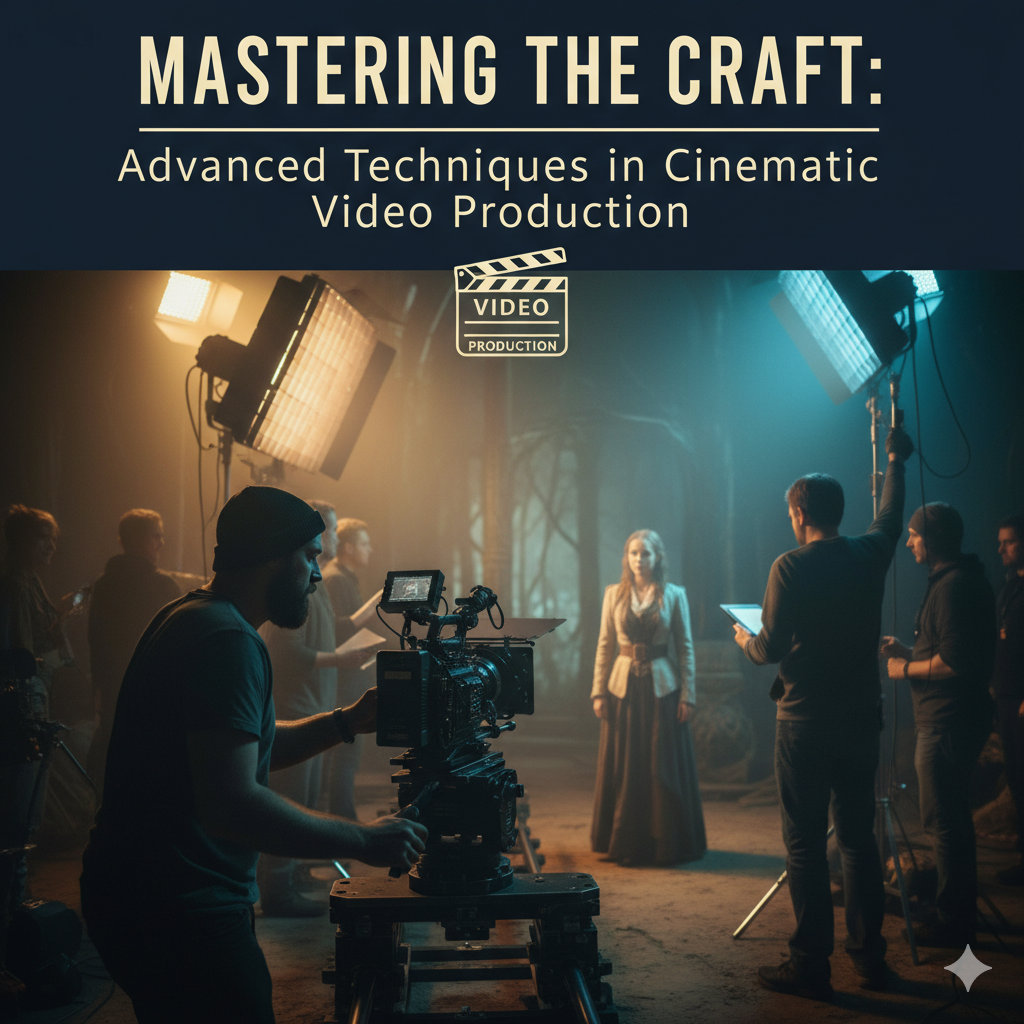Introduction
In the realm of digital content, video is king. But not all video is created equal. Beyond the basics of proper exposure and clear audio lies a higher plane—the domain of cinematic video production. This is where moving images transcend mere recording and become evocative stories, capable of stirring emotion and holding an audience captive. For the filmmaker ready to elevate their work, mastering advanced techniques is the critical next step. This journey requires a shift in mindset from simply capturing scenes to meticulously constructing them, leveraging craft in every facet of the filmmaking process.
The foundation of all cinematic work is, without question, intentional lighting. While beginner video production often relies on available light or simple on-camera solutions, the advanced practitioner uses light as a paintbrush. This involves mastering the three-point lighting setup not as a rigid rule, but as a foundational principle to be adapted and broken. The key is motivation. Every light source in your frame should feel justified, as if it emanates from a practical source within the scene—a window, a lamp, or the sun. Techniques like chiaroscuro—the strong contrast between light and shadow—can add drama and depth, sculpting your subject’s features and guiding the viewer’s eye. Don’t just illuminate your subject; use light to reveal their character, their mood, and their world.
The Power of Dynamic Movement
A static shot can be powerful, but a moving shot can be poetic. Advanced video production embraces dynamic motion to create a visceral, immersive experience. This goes beyond handheld wobbles or simple tripod pans. It’s about motivated movement that serves the narrative.
- The Dolly Zoom: This iconic technique, where you dolly the camera forward or backward while simultaneously zooming in the opposite direction, creates a disorienting, psychological effect, perfectly visualizing a character’s sudden realization or a shift in their reality.
- Gimbals and Sliders: These tools allow for buttery-smooth tracking shots that can follow a subject with grace or reveal a scene with dramatic weight. The key is to move with purpose. A slow push-in on a character’s face can intensify an emotional moment, while a lateral reveal can introduce a new story element with breathtaking impact.
- Stabilized Handheld: Even handheld shots can be elevated. The goal is not to eliminate all movement, but to control it. A slight, organic sway can impart a sense of documentary-like immediacy and energy, making the viewer feel present within the action.
The Invisible Art of Sound Design
Perhaps the most underestimated aspect of cinematic video production is sound. Audiences will forgive a slightly soft image, but they will never forgive poor audio. Cinematic quality is achieved not just with clean dialogue, but with a rich, layered soundscape.
This begins with dedicated field recording—using boom microphones and lavaliers to capture pristine dialogue, isolated from ambient noise. The real magic, however, happens in post-production. This is where you build your world from the ground up. Add subtle layers of atmosphere: the distant hum of a city, the rustle of leaves in a forest, the muffled echoes of an interior space. Then, introduce Foley—the art of creating custom sound effects for footsteps, clothing rustles, and object interactions. These tiny, hyper-specific sounds ground the audience in the physical reality of the scene. Finally, a carefully curated musical score or ambient score can tie everything together, guiding the audience’s emotional journey without them even realizing it.
Color: The Emotional Backbone
Color grading is where your footage is truly unified and given its soul. It’s the final, and one of the most powerful, tools in the cinematic video production pipeline. Moving beyond simple correction, advanced color grading is about establishing a visual tone that supports the story.
Start by shooting in a flat or Log color profile to retain maximum information in your highlights and shadows. This gives you the latitude to shape the image in post. Techniques like color theory come into play here. A cold, desaturated palette might evoke feelings of isolation or melancholy, while a warm, saturated one can suggest nostalgia or joy. Use secondary color correction to isolate and manipulate specific hues, making a character’s eyes pop or ensuring a key prop draws the eye. The goal is consistency and intent, creating a look that feels organic to the narrative yet distinctly artistic.
Conclusion: Weaving the Tapestry
Mastering the craft of cinematic video production is a continuous pursuit. It requires a deep understanding of how lighting, movement, sound, and color work in concert to tell a story. Each technique is a thread, and the filmmaker is the weaver. The true artistry lies not in using every tool at your disposal in every project, but in knowing which techniques best serve the story you want to tell. By moving beyond the fundamentals and embracing these advanced methods, you transform from a content creator into a visual storyteller, capable of producing work that doesn’t just capture attention, but leaves a lasting impression.

